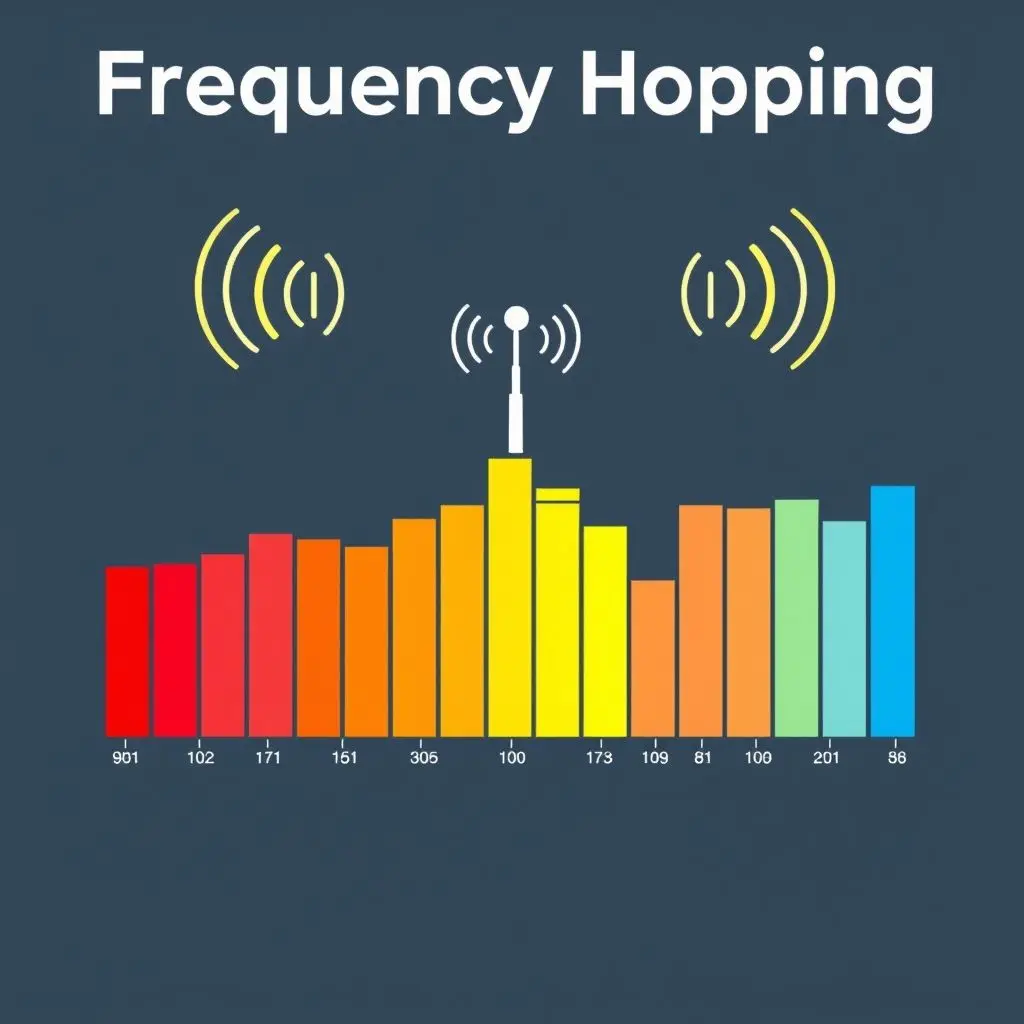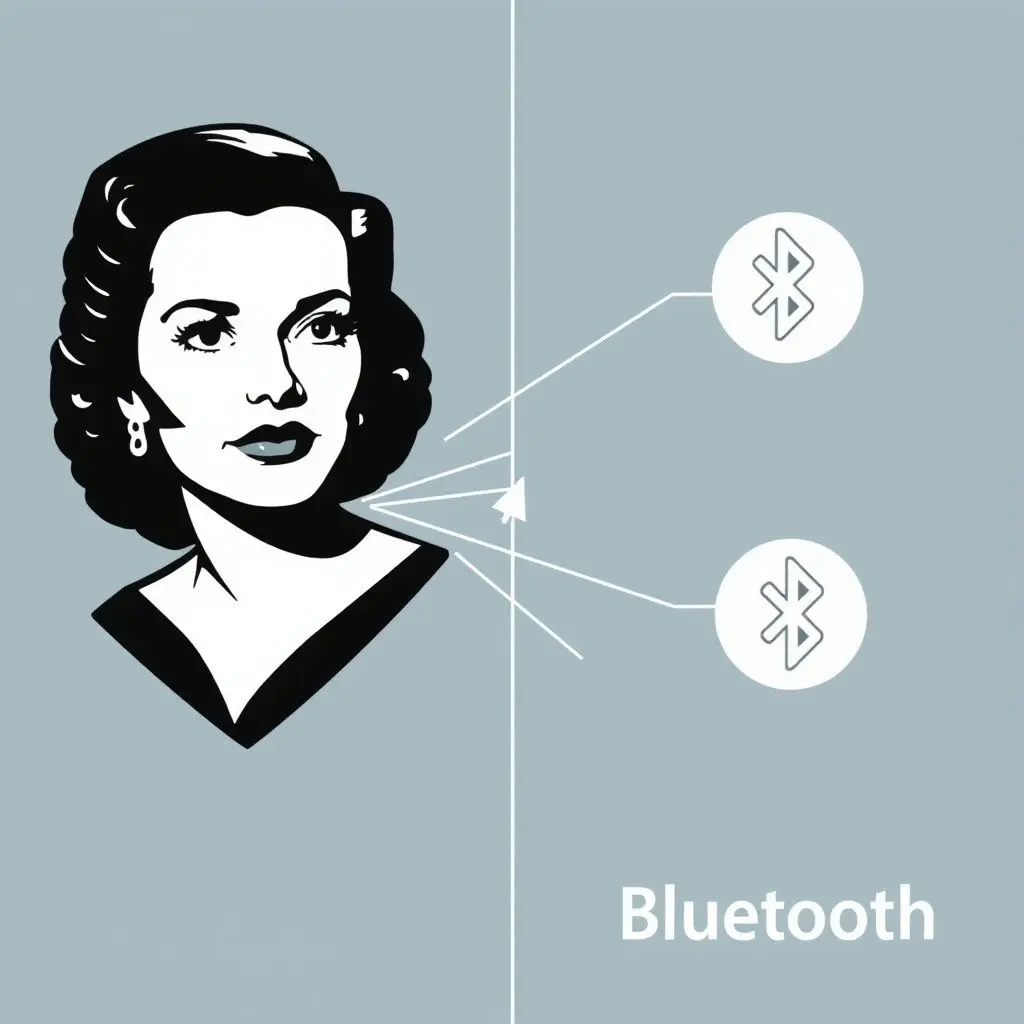Imagine this: A dazzling silver screen icon, gracing magazine covers and lighting up movie theaters worldwide. Now, picture the complex technology that keeps your phone connected, powers your smart home, and lets you stream movies seamlessly.
Believe it or not, these two worlds collide in the extraordinary story of Hedy Lamarr. More than just a glamorous Hollywood star, she harbored a brilliant, inventive mind that played a foundational role in the development of technologies we rely on every single day, like Wi-Fi and Bluetooth.
Want a quick glimpse into this incredible dual life? Check out this short video:
Table of Contents
Beyond the Marquee: Hedy’s Intellectual Spark
Born Hedwig Eva Maria Kiesler in Vienna, Austria, Hedy Lamarr’s journey to Hollywood fame is a captivating tale in itself. She captivated audiences with her stunning beauty and acting prowess, starring in classics like Samson and Delilah and Algiers. To the world, she was the epitome of glamour, a true Hollywood bombshell.
But beneath the carefully crafted public image lay a deep intellectual curiosity. Hedy was not content with just being famous. She had a sharp mind that was genuinely interested in how things worked and how they could be improved. She reportedly tinkered with inventions and ideas in her spare time, far removed from the sets and premieres.

A World at War: The Urgent Need for Secure Communications
As World War II raged, Hedy, a Jewish immigrant who had fled Austria, felt a strong desire to contribute to the Allied war effort. She understood the stakes and wanted to use her intellect for something impactful, something that could help defeat the Axis powers.
One critical problem facing the Allies was the vulnerability of radio-controlled torpedoes. These early guided weapons were controlled by radio signals, but these signals could be easily jammed by the enemy. Jamming would disrupt the torpedo’s guidance, rendering it useless. A secure, unjammable communication method was desperately needed.
The Eureka Moment: Frequency Hopping Revealed
It was this problem that captured Hedy’s attention. She reportedly discussed the issue with friends and acquaintances, including composer and inventor George Antheil, who was also exploring wartime inventions. Antheil was known for his experimental music, which sometimes involved synchronizing multiple player pianos.
Together, Lamarr and Antheil conceived a groundbreaking idea: instead of transmitting the radio signal for the torpedo guidance on a single, constant frequency, they would rapidly switch the transmission frequency across a wide range of frequencies. If both the transmitter and receiver hopped frequencies in a synchronized pattern known only to them, an enemy trying to jam the signal would only be able to block it for tiny fractions of a second as the signal briefly passed through the frequency they were jamming. For the rest of the time, the signal would be clear on a different frequency.

This concept, essentially making the signal’s location on the radio spectrum unpredictable, was revolutionary. They developed a system using perforated paper rolls, similar to those used in player pianos, to synchronize the frequency changes between the transmitter and receiver. They patented this “Secret Communication System” in 1942 (U.S. Patent No. 2,292,387).
Ahead of the Curve: Why It Wasn’t Immediately Used
Despite its ingenious design and potential to significantly aid the war effort, Lamarr and Antheil’s invention was not immediately adopted by the U.S. military. Several reasons contributed to this:
- Technological Limitations: The technology required at the time to implement the synchronized frequency hopping system, particularly the mechanical player piano mechanism, was complex and difficult to miniaturize and deploy effectively on naval vessels.
- Skepticism and Bias: Some within the military establishment were reportedly skeptical of an invention coming from a Hollywood actress and a avant-garde composer. There was perhaps a lack of understanding or trust in applying such seemingly unrelated fields to military technology.
- Not Fully Developed for Immediate Use: While the concept was brilliant, the patent described a prototype. Further engineering and development would have been needed to make it practical for wartime deployment.
The patent eventually expired, and Lamarr and Antheil did not make any money from their invention during the war.
The Enduring Legacy: From Hopping to Wi-Fi and Beyond
Although not used in WWII, Lamarr and Antheil’s frequency hopping concept was far from forgotten. In the following decades, as electronic technology advanced, their fundamental idea of rapid frequency switching became feasible. It formed a core principle of what is now known as spread spectrum communication.
Spread spectrum techniques, including frequency hopping spread spectrum (FHSS) and direct-sequence spread spectrum (DSSS), are crucial because they offer several advantages:
- Resistance to Interference and Jamming: As Lamarr and Antheil originally intended, spreading the signal across frequencies makes it much harder to block or interfere with the entire signal.
- Increased Security: Without knowing the hopping sequence, an unauthorized party cannot easily intercept or understand the full signal.
- Efficient Use of Spectrum: Multiple users can share the same frequency band without interfering with each other if they use different hopping patterns (or other spread spectrum techniques).

This concept of spread spectrum became essential to various modern wireless technologies. Bluetooth, for instance, uses frequency hopping to connect devices over short ranges. And yes, the wireless standard that powers your home and office networks, Wi-Fi (specifically the IEEE 802.11 standards), heavily relies on spread spectrum principles, initially using techniques related to Lamarr’s concept to ensure robust and reliable connections even in crowded radio environments.

More Than a Star: Hedy’s True Impact
Hedy Lamarr’s story is a powerful reminder that genius can come from unexpected places. She defied the stereotypes of her time, proving that immense beauty and profound intelligence are not mutually exclusive. Her contribution to technology remained largely unknown to the public for decades, only gaining significant recognition much later in her life and after her death.
Her legacy extends far beyond the silver screen. She stands as a symbol of innovation, perseverance, and the untapped potential that lies within individuals regardless of their public profession. The next time you effortlessly connect to Wi-Fi, take a moment to remember the Hollywood star with the secret life who helped make it possible.
Your Burning Questions Answered
Was Hedy Lamarr the sole inventor of Wi-Fi?
No, Hedy Lamarr was not the sole inventor of Wi-Fi. Wi-Fi is the result of decades of development and contributions from numerous engineers and scientists. However, her co-invention of frequency hopping with George Antheil is considered a foundational concept for spread spectrum communication, which is a core technology underlying modern wireless standards like Wi-Fi and Bluetooth.
Did Hedy Lamarr get rich from her invention?
No, Hedy Lamarr and George Antheil did not profit financially from their 1942 patent during its active life or during the war. The technology was not widely adopted by the military at the time, and the patent eventually expired. It was only much later that the value of their concept was recognized and implemented in commercial technologies.
How exactly did frequency hopping help Wi-Fi?
While modern Wi-Fi primarily uses Direct Sequence Spread Spectrum (DSSS) and Orthogonal Frequency-Division Multiplexing (OFDM), the underlying principle of spread spectrum (spreading the signal across a wider frequency band) owes a conceptual debt to Lamarr’s frequency hopping. Spread spectrum techniques are crucial for Wi-Fi’s ability to handle multiple users, resist interference from other devices, and provide a robust wireless connection. Lamarr and Antheil’s work was a pioneering step in demonstrating the power of changing frequencies for communication security and reliability.
Was Hedy Lamarr recognized for her invention during her lifetime?
Recognition for her invention came much later in her life. In the 1990s, as spread spectrum technology became widespread, her contribution began to be acknowledged. She received several awards late in life, including the Electronic Frontier Foundation (EFF) Pioneer Award in 1997, although many argue this recognition was long overdue.
Remembering a Pioneer
Hedy Lamarr’s journey from movie star to wartime innovator is a fascinating chapter in the history of technology and a powerful testament to human ingenuity. Her story encourages us to look beyond surface appearances and recognize the diverse talents and potential that individuals possess. Her secret communication system, born from a desire to help win a war, contained the seeds of a technology that now connects billions of people around the globe. It’s a legacy that truly shines bright.





